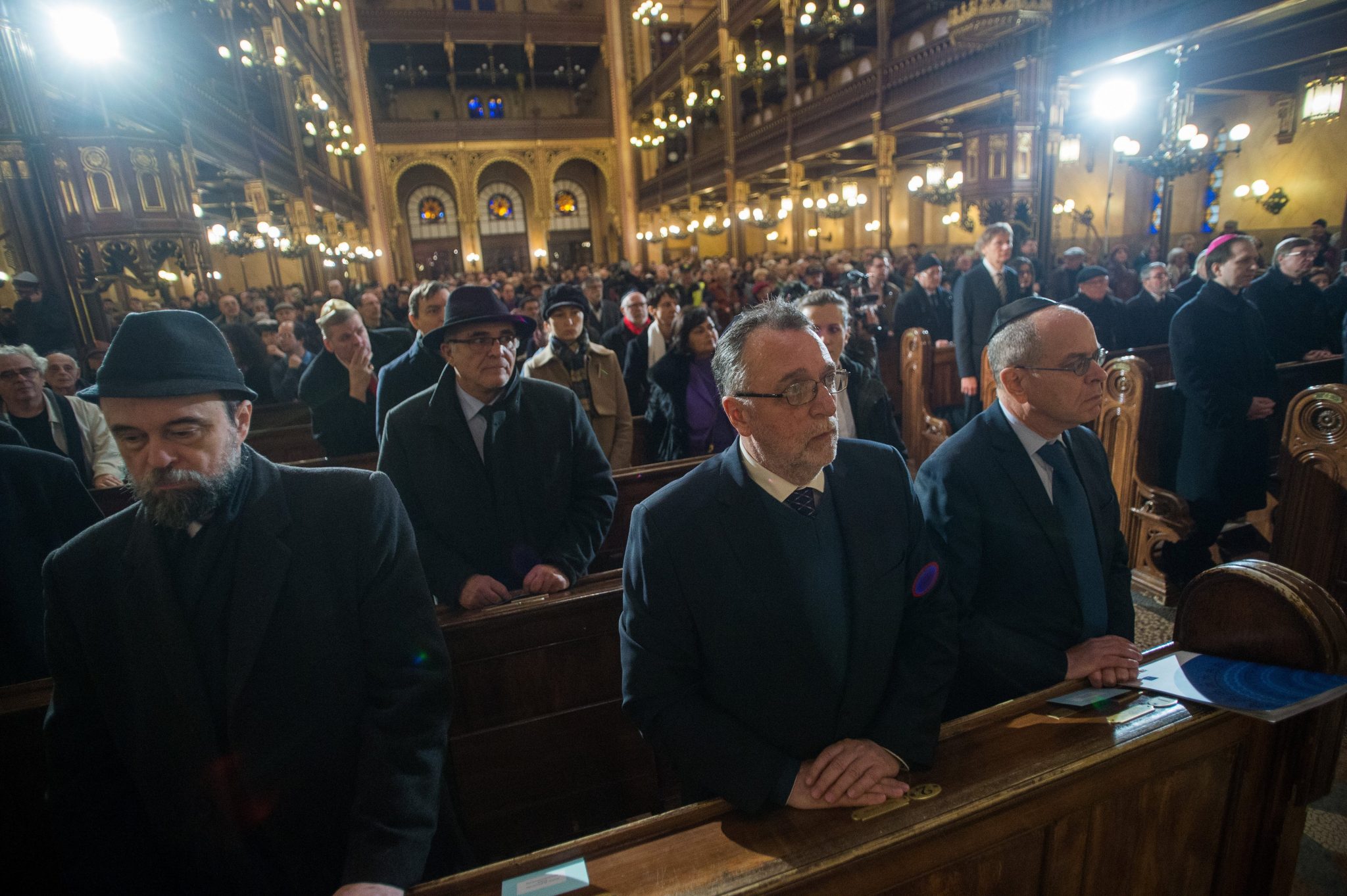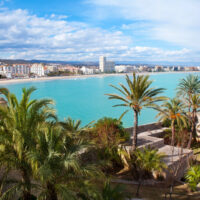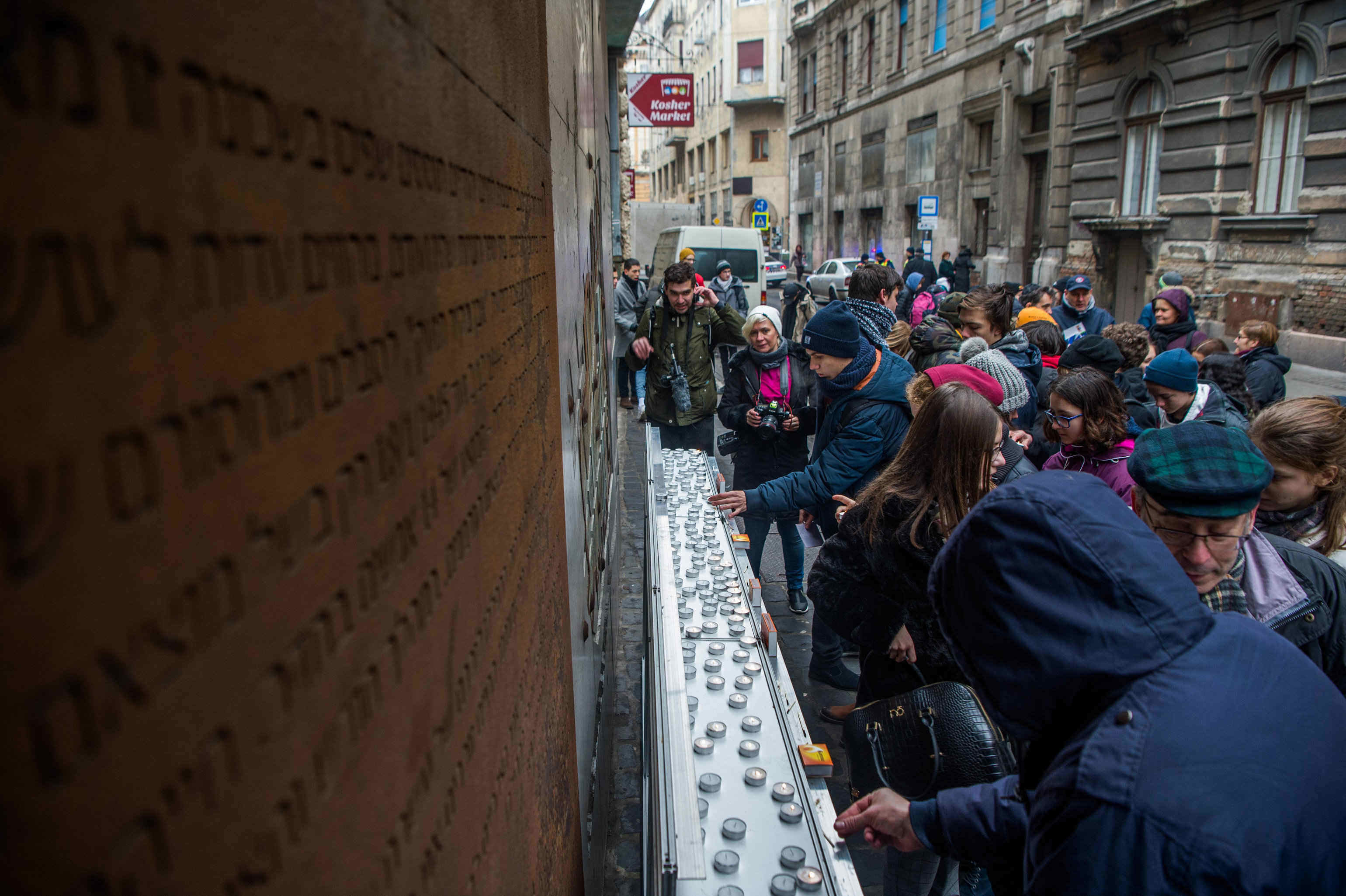75th anniversary of Budapest Jewish ghetto liberation commemorated
Hate should not be commemorated with more hatred but with dignity, Slomo Köves, the head rabbi of the Unified Hungarian Jewish Congregation (EMIH), said on Friday at a commemoration of the 75th anniversary of the liberation of the Jewish ghetto in Budapest.
“The question is not who our parents were, but what we do with their memory,” Köves said. “It is incumbent on us to furnish commemorations with content, especially when the survivors — those with personal memories of the Holocaust — are no longer among us,” he added.
Yakov Hadas-Handelsman, Israel’s ambassador to Budapest, said that as he walked on the streets of Budapest, there were memorials that “make us stop and think about the horrors of the past”. Remembering is especially important today, he added, “when anti-Semitism is on the rise again across Europe and people are openly attacked because of their religious or ethnic origin.”

Read alsoBudapest ghetto liberation anniversary marked in Dohány Street Synagogue
Éva Fahidi, a writer and Holocaust survivor, said she belonged to a generation that “always when it remembers, it also mourns.” Whereas the ghetto’s liberation 75 years ago was gratifying, she said, it could not be commemorated without remembering the suffering of people who froze or starved within its walls.
She said she was 18 years old when she experienced that when the world turned to hatred, anything in the world could be done to her. Hate is the worst kind of emotion, Fahidi said. But those who are on the receiving end of it must surely want to be someone who doesn’t hate.”
At the event, Baruch Oberlander, the head of the Budapest Orthodox Rabbinate, spoke the Kadish, and people gathered lit candles of remembrance.
Zoltán Pokorni, mayor of the 12 district, referring to his own grandfather who was a Nazi collaborator, said: “It is not a question of who our grandparents were but whether the act of remembering them can serve as lesson in our current lives.”
Péter Niedermüller, Mayor of Budapest’s 7th district, said that remembrance was a moral and political act since it involved “facing up to our own responsibility”. What happened in the ghetto and throughout Budapest in the winter of 1944-1945 “is the country’s shame … neither forgettable nor forgivable; a burden we all must live with.”
The decree marking the boundaries of Budapest’s “large” ghetto was published on November 29, 1944, and the area containing Dohany Street, Nagyatadi Szabo (today Kertesz) Street, Kiraly Street, Csanyi Street, Rumbach Sebestyen Street, Madach Imre Street, Madach Imre Square and Karoly Boulevard was sealed on December 10.
Initially 40,000 people forced to wear the yellow star were relocated to the ghetto’s 4,513 apartments, but numbers grew rapidly, reaching 70-80,000 by the start of the following year.
In spite of the efforts of the Red Cross, most received only 700-800 calories a day, and at the end of December, the situation deteriorated further during the Soviet siege. People died in large numbers, with 80-120 dead taken away each day. When the ghetto was liberated on January 18, 1945, more than 3,000 dead bodies were found on Klauzal Square alone.
Source: MTI
please make a donation here
Hot news
Retail chain Lidl plans considerable expansion in Hungary
PHOTO REPORT: Budapest welcomes winter with ice rink and Christmas market in city centre
Hungarian car seller AutoWallis concludes historic agreement buying Czech competitor
What will Trump say? Budapest Airport: China’s e-commerce gateway to Central Europe
The European Commission cools PM Orbán’s optimism about Hungary’s 2025 GDP growth
Top Hungary news: BDSM sex gone wrong, cancer treatment, Wizz Air modification – 15 November, 2024




